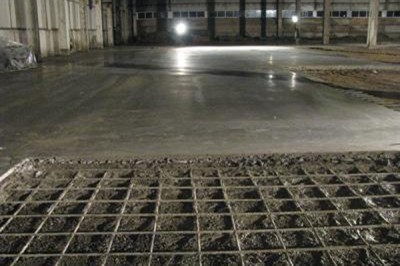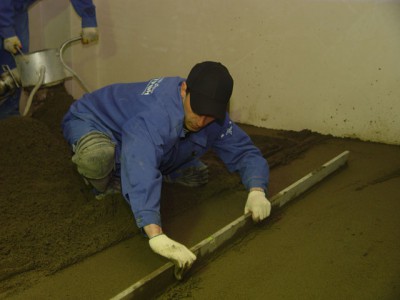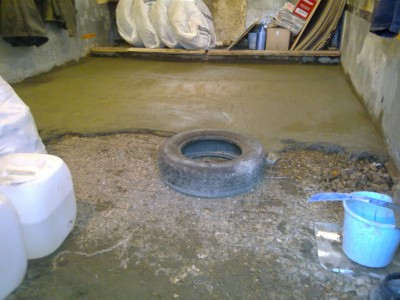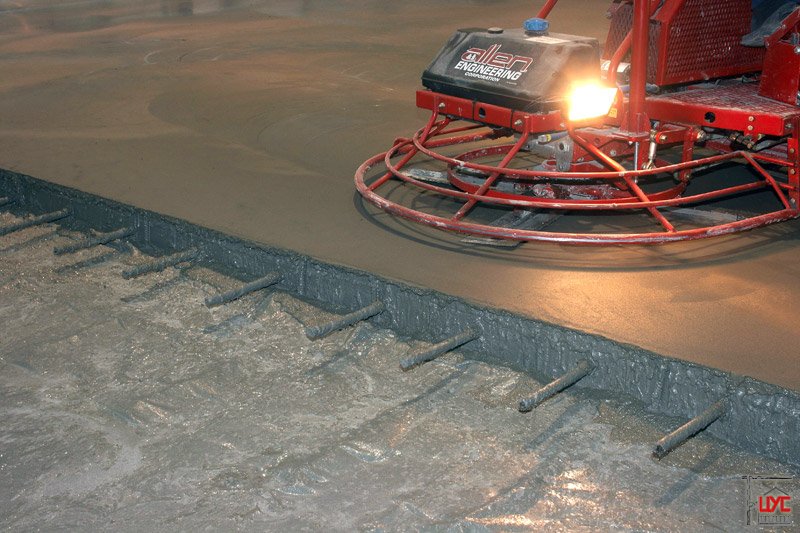Concrete floor in the garage: concrete floor technology from A to Z
Every motorist dreams of having a garage - this is an undeniable fact. And it doesn’t matter if he lives in a high-rise apartment building or is the owner of a private house. Naturally, there are a lot of ways to get "housing" for your car, but the most acceptable, according to many - its construction. With this, everything is clear - the garage will be built for the specific needs of the person, and in such a matter as car care and storage, this is extremely important. Thus, an ideal garage is a garage built on its own project and ideally with the personal participation of the owner himself. Naturally, this process is complex and responsible, but nothing is impossible. In this article we will talk about one of the key stages of construction, namely, how to properly pour concrete floor in the garage.
Garage flooring is a term that in itself says that this part of the building must meet certain requirements, namely:
- strength - is constantly subjected to abrasive and shock loads;
- wear resistance - surface intensity is intensively exploited;
- moisture resistance - possible leakage of fluid from the car, condensate, etc .;
- chemical inertness to gasoline, various types of oil and car chemistry.
Screed base preparation
At the initial stage of construction, a concrete floor screed is made in the garage, which naturally rests on a certain foundation, which is a compacted layer of sand or gravel with a thickness of at least 15 cm. Then, waterproofing is necessary, and for this we spread a layer of roofing material, a dense plastic film (preferably in 2 layers) or hydrostekloizol. It is very important to make sure that the edges of the waterproofing material come on the walls. On this waterproofing layer we put a heater 7-10 cm thick.

For these purposes, for example, polystyrene foam is quite suitable. The use of insulation is advisable only if it is assumed that the garage will be heated. Well, finally, stack reinforcing metal mesh. It will significantly strengthen the concrete structure and protect the floor from cracking. The whole foundation is ready - you just have to fill in the concrete floor in the garage.

If the garage is not heated in the cold season, then as an alternative to the concrete floor, a paving coating is quite suitable. It is also laid on a sand pillow 10-15 cm thick, on top of which a graphite ball of 15-20 cm is poured. The upper layer is formed by laying the paving stones themselves, and the resulting cracks are covered with a cement-sand mixture.
A significant drawback of the untreated concrete floor is its tendency to increased dust formation. Its surface layer does not have high strength and begins to crumble. To strengthen the surface layer of concrete and eliminate dust formation, dust removal methods are used. Read more about this in the article:https://floor.expertexpro.com/en/ustroistvo-rmnt/obespylivanie-i-uprochnenie-betonnogo-pola.html.
We prepare the mixture for pouring
Filling the floor in the garage with concrete begins with the preparation of the mortar. For its preparation we use sand and cement in the ratio: 1: 3, 1: 4 or 1: 5. It all depends on the chosen brand of cement. For example, if we are talking about cement M400, then here the component composition is mixed at the rate of 1: 3.Increasingly, when installing floors, special dry building mixtures of factory manufacture such as M150 sand concrete are used. They are produced with the introduction of modern technologies, and the addition of plasticizers and fiberglass to the formulation, which allows you to get a fairly strong and perfectly even screed. Leveling mixtures are applied, as a rule, already as a face screed with a layer of 2-3 cm.
Important! If you prefer the independent preparation of mortar for screed, then for its mixing it is advisable to use low-speed mixers.
Slope screed and clearances
The concrete floor device must also be carried out taking into account one important condition - the slope. It should be within 1.5-2%, which somewhere will be 1.5-2 cm per 1 m of length. The slope of the concrete screed should go towards the gate or to the grate.
Also, do not forget about the compensation gaps, which must be performed near all walls and internal protruding parts - poles, pipes, etc. This is especially important if the garage area does not exceed 50 m2. It is convenient to leave gaps even at the time the screed is made. For these purposes, dilatation tape, dilatation plastic profile or a strip of expanded polystyrene with a thickness of 0.5 cm are used.
To increase the strength of the surface, as well as in order to level it, grinding of the concrete floor is performed. As a result, the surface acquires the necessary roughness and is easily amenable to further processing. About grinding concrete floor we will tell in the material:https://floor.expertexpro.com/en/ustroistvo-rmnt/shlifovka-betonnogo-pola.html.
Concrete Flooring Technology
Before starting pouring, it is necessary to mark the working area. To do this, we hammer the columns around the perimeter, it is better from metal fittings - they are clearly visible and easy to hammer into the ground. On them from the accepted zero mark, the height of the future screed is applied, and additional marking is performed using the building level.


Pour the prepared solution onto the base and disperse it evenly over the entire surface. The work must be done "at a pace" - the solution quickly sets. The thickness of the concrete floor in the garage depends on the requirements for it and can be in the range of 30-70 mm. It is important how much material is used to smooth out possible irregularities in the ground or the concrete slab on which the screed is laid. And also, if it is planned to introduce a “warm floor” system, then the thickness will also differ from the minimum 30 mm.
Attention! It is very important to fill the floor at a time. In this way, it will be possible to achieve maximum strength and solidity of the concrete structure.
After pouring the screed, it is recommended to moisten it once every 10 hours, which will subsequently avoid cracking. It takes 6-7 days to completely harden the concrete mixture. If the facial screed was performed using a special self-leveling mixture, then the period of solidification must be read on the packaging. As a rule, it is 12-24 hours.
If you are interested in the installation of concrete floors not only in the garage, but also in other rooms, then you can get more information about this from a special article:https://floor.expertexpro.com/en/ustroistvo-rmnt/ustrojstvo-betonnyx-polov.html.
You might be interested additional concrete flooring after the screed is completely frozen. For these purposes, the surface is opened with polyurethane or epoxy compounds, as well as with special paint for concrete. Some motorists lay tiles on concrete. In this case, there is no need to talk about any restrictions - it all depends on the taste preferences and financial capabilities of the owner. One thing is important - the floor surface must be rough, to ensure good adhesion to the wheels of the car.
As you can see, it’s quite realistic to make a concrete screed in the garage yourself. We hope our detailed instructions will help you with this. And remember, the comfort of your “iron friend” will depend on the quality of the screed made.




1 comment